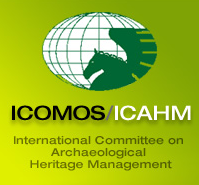Archaeologists Blast Hasty World Heritage Listings

One of the most significant global committees that you never heard of summoned a couple of hundred experts to the island of Menorca, Spain last April. The meeting involved politics, the remnants of great civilizations, human catastrophes, architectural triumphs, religious works of art and architecture, use of tourism, the rise and fall of empires, and did we say politics?
The International Committee on Archaeological Heritage Management, or ICAHM, held its first conference on how to manage the world’s myriad archaeological World Heritage sites. This wildly varied array of places encompasses many of the most celebrated sites of human cultural accomplishment and catastrophe—everything from the pyramids and Roman fortifications to Mongol-era tombs and prehistoric rock art. ICAHM’s key job is to advise the World Heritage Committee about new sites proposed for the famous list.
Right at the outset, ICAHM co-president Dr. Willem J.H. Willems of Leiden, Netherlands, put the core issue on the table. “Archaeology is the study of the past,” he said in his April 9 keynote, but “the past doesn’t exist anymore. Heritage is about the use of the past in the present.” And that’s where it gets interesting. And risky.
Too many countries are rushing to use the past—their heritage sites—for present purposes. Willems sharply criticized the way that sites are proposed and awarded World Heritage inscription. According to the World Heritage Convention, an international treaty, sites should be awarded a place on the list based on solid scientific and academic reasoning. Not happening, said Willems. The World Heritage Committee has been approving too many applications based on economic and “radically political” expediency.
For most countries, World Heritage status is a hotly desired prize. Most countries, especially impoverished developing nations, are eager to put their greatest natural and cultural places on the list. Why? Prestige in part, national pride in part, yes, but also that modern vein of gold: tourism! An inscription puts you on the travel map....
Read the full report on the National Geographic Traveler. [Source] Jonathan Tourtellot of National Geographic Traveler: Archaeologists Blast Hasty World Heritage ListingsSimilar content
posted on
30 Jul 2021
posted on
22 Jul 2012
deadline
30 Apr 2024
15 Oct 2018 - 26 Oct 2018
posted on
04 Oct 2018



